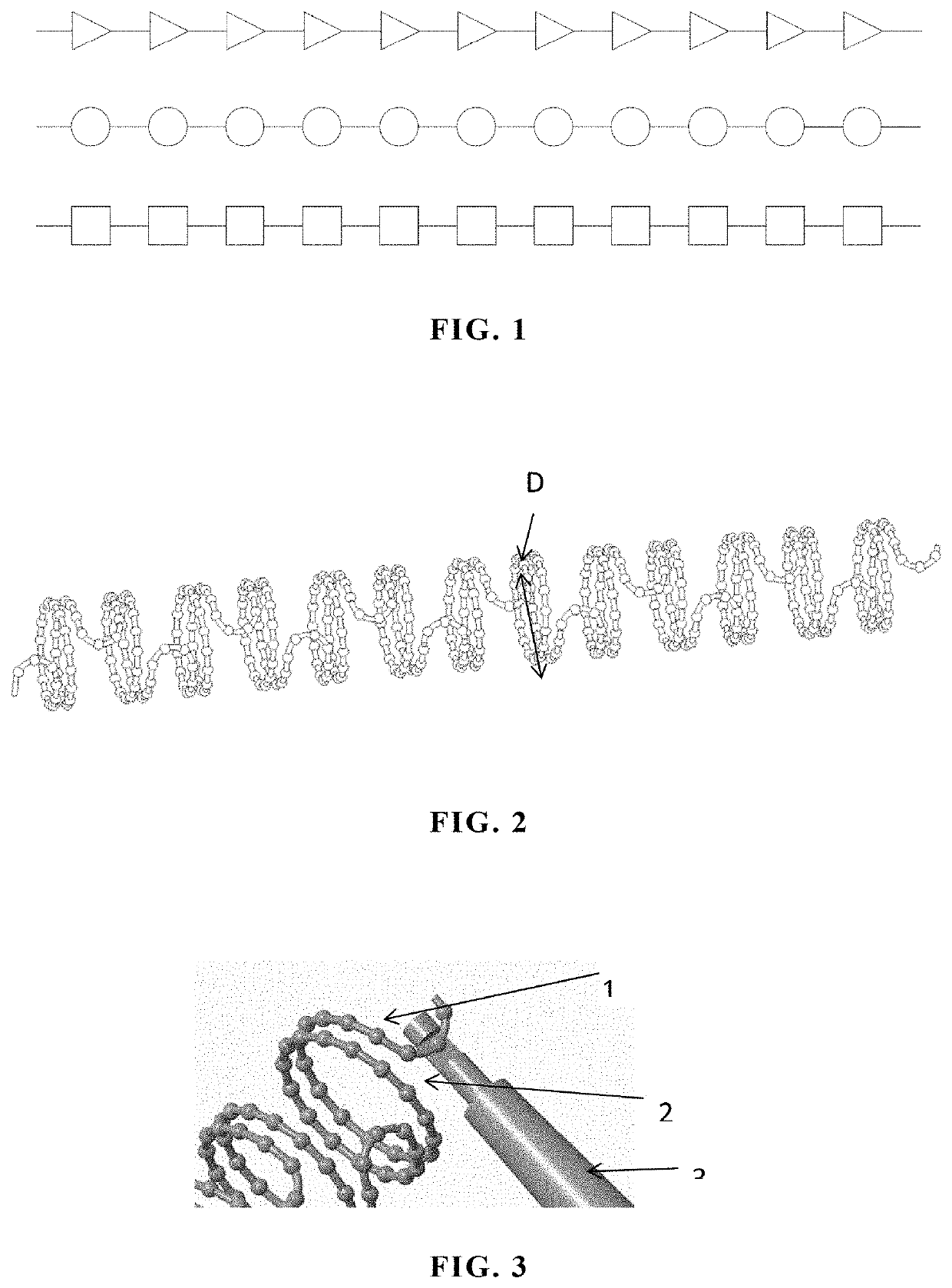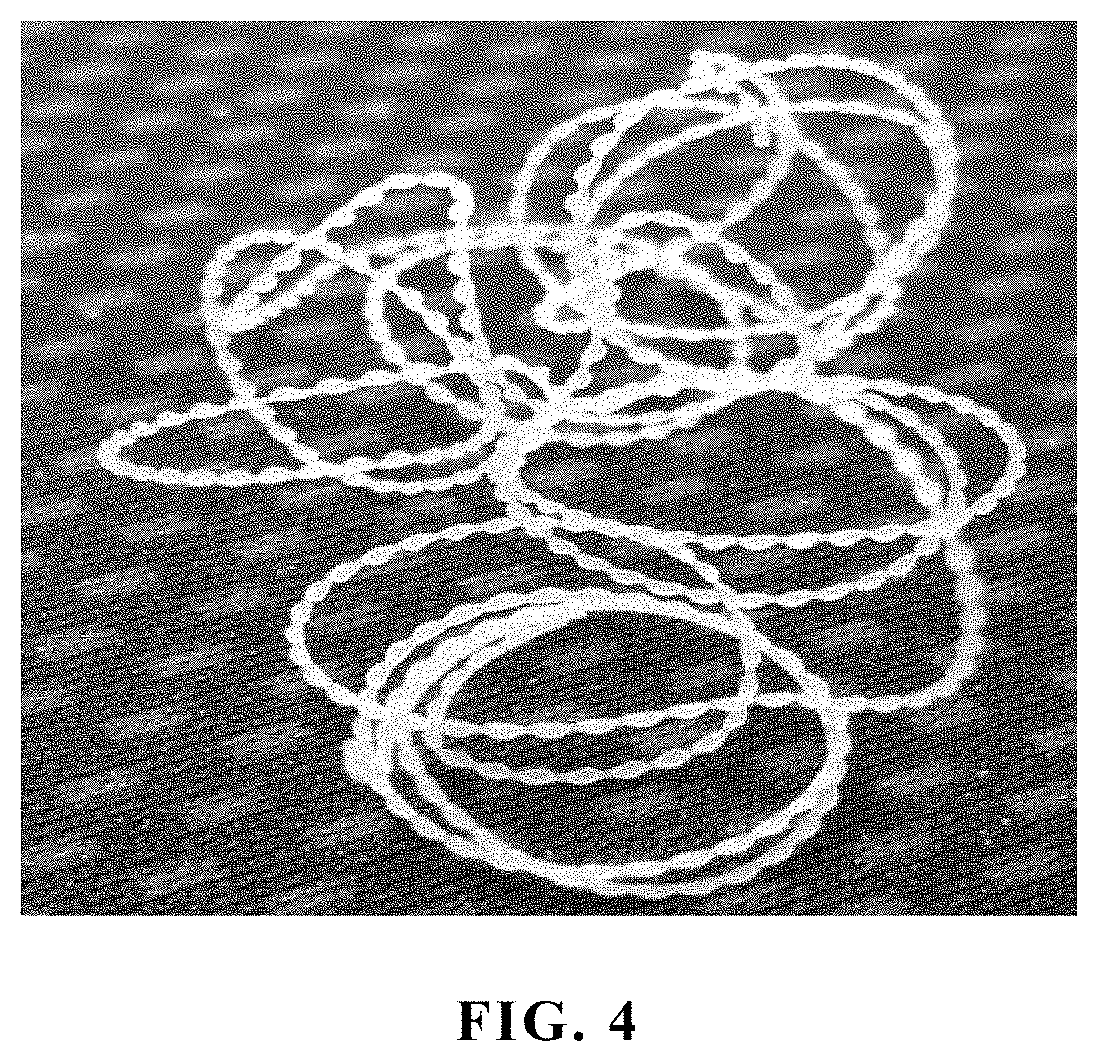Polymer-based arterial hemangioma embolization device, manufacturing method and application of same
a technology of hemangioma and embolization device, which is applied in the field of polymer-based arterial hemangioma embolization device, can solve the problems of inability to improve the long-term mass effect of metal, patient is at risk of life, and may cause irreparable effects, etc., to relieve the permanent threat of foreign bodies, simple, efficient, and flexible
- Summary
- Abstract
- Description
- Claims
- Application Information
AI Technical Summary
Benefits of technology
Problems solved by technology
Method used
Image
Examples
example 1
[0062]The example provides a polymer-based embolization device used in peripheral embolization surgery and a manufacturing method thereof, the method comprising:
[0063]1) preparing a mold according to a structure of the embolization device to be manufactured;
[0064]2) designing a program for preparing a raw material deposition pattern of the embolization device by using a computer;
[0065]3) fixing the mold at the rotating rod of the fourth-axis system of the four-axis rapid forming system, so that the mold can rotate forwards or backwards along with the rotating rod of the fourth-axis system under the control of a computer control system; adding raw materials for manufacturing the embolization device into the dispensing system; and
[0066]4) controlling the X-Y-Z positioning system and the fourth-axis system by means of a computer control system according to the program designed in the step 2), enabling the dispensing system to accurately extrude raw materials according to a pre-designed...
example 2
[0069]The example provides a degradable polymer-based embolization device used in vascular embolization surgery and a preparation method thereof, the method comprising:
[0070]1) preparing a mold according to a structure of the embolization device to be manufactured;
[0071]2) designing a program for preparing a raw material deposition pattern of the embolization device by using a computer;
[0072]3) fixing the mold at the rotating rod of the fourth-axis system of the four-axis rapid forming system, so that the mold can rotate forwards or backwards along with the rotating rod of the fourth-axis system under the control of a computer control system; adding raw materials for manufacturing the embolization device into the dispensing system; and
[0073]4) controlling the X-Y-Z positioning system and the fourth-axis system by means of a computer control system according to the program designed in the step 2), enabling the dispensing system to accurately extrude raw materials according to a pre-d...
example 3
[0076]The example provides a polymer-based embolization device used in vascular embolization surgery and a preparation method thereof, the method comprising:
[0077]1) preparing a mold with a bead-like groove;
[0078]2) preparing polymer fiber filaments with the diameter of 0.2 mm by adopting a conventional hot melting extrusion technology;
[0079]3) treating the polymer fiber filaments with an iopamidol solution to obtain polymer fiber filaments containing iopamidol; and
[0080]3) placing the polymer fiber filament containing iopamidol into the mold at a forming temperature, closing the mold and pressurizing to form and solidify the polymer fiber filament, removing the polymer fiber filament from the mold to obtain the polymer fiber filament with a bead-like structure, spirally winding the bead-like polymer fiber filament on a rod-shaped support, and carrying out heat treatment to fix the shape to obtain a polymer helix with the bead-like structure; and then manually weaving micro-cilia (d...
PUM
| Property | Measurement | Unit |
|---|---|---|
| diameter | aaaaa | aaaaa |
| diameter | aaaaa | aaaaa |
| length | aaaaa | aaaaa |
Abstract
Description
Claims
Application Information
 Login to View More
Login to View More - R&D
- Intellectual Property
- Life Sciences
- Materials
- Tech Scout
- Unparalleled Data Quality
- Higher Quality Content
- 60% Fewer Hallucinations
Browse by: Latest US Patents, China's latest patents, Technical Efficacy Thesaurus, Application Domain, Technology Topic, Popular Technical Reports.
© 2025 PatSnap. All rights reserved.Legal|Privacy policy|Modern Slavery Act Transparency Statement|Sitemap|About US| Contact US: help@patsnap.com


